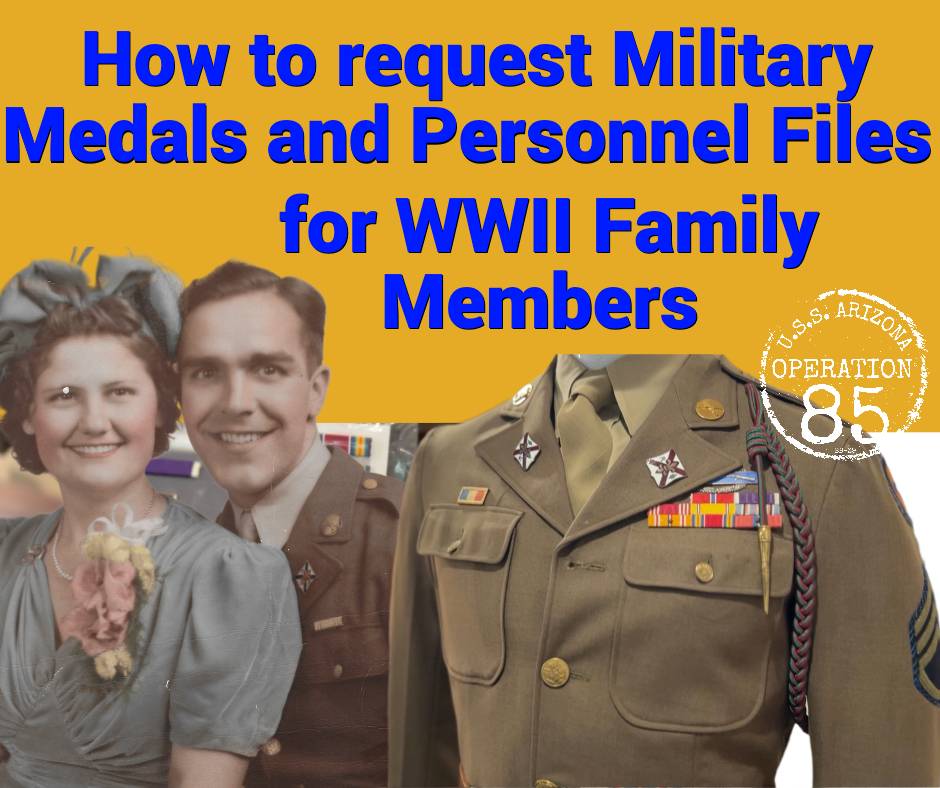How to Request Military Medals & Personnel Files for Family Members

How to Request Military Medals & Personnel Files for Family Members
When seeking to uncover a loved one’s military history—whether to preserve their legacy, understand their achievements, or fill gaps in family knowledge—there are straightforward ways to access military records and personnel files. Here’s a guide based on insights from Kevin Kline at Operation 85 who will go over his own experience in how to request military medals and personnel files from his family members who served in World War Two. Watch the video below to get the full story!
1. Gather Essential Information
Before you start, you’ll need some key details about the service member:
- Full Name
- Date of Birth
- Military Service Number (Serial Number)
These basics are essential for requesting records from official channels and will streamline the retrieval process.
2. Access Military Records Online Through Archives.gov
The National Archives offers a portal on Archives.gov that simplifies the process of finding military records:
- Go to Archives.gov and navigate to the “Veterans’ Records” section.
- Here, you can initiate a search for the veteran’s records, including medals and awards, and request copies of key documents like the DD214.
3. Understanding the DD214 Document
The DD214, often called the Certificate of Release or Discharge from Active Duty, is a crucial document. It provides a roadmap of the service member’s military journey, detailing enlistment dates, locations, units, assignments, and honors received.
If you cannot locate a copy within family documents, Archives.gov can help obtain one. In cases where the DD214 is unavailable, due to issues like the 1973 National Archives fire that destroyed many WWII Army records, other options can still yield valuable information.
4. Obtaining Replacement Medals and Awards
If the service member’s medals were lost or never issued, the National Archives offers replacement options. By providing the necessary details through their website, families can often receive these medals and ribbons at no cost. In some cases, as Kevin Klein noted, medals are even engraved with the service member’s name—a thoughtful touch that adds a personal connection to these symbols of honor.
5. Recovering Lost Personnel Files
If you’re specifically looking for personnel files, be aware that the fire in St. Louis in 1973 may have impacted records from WWII Army veterans. Here’s how to work around that:
- Reconstructed Personnel Files: After the fire, the National Archives reconstructed many personnel files. While these may lack comprehensive details, they still offer insight into the service member’s career.
- Local Resources: Check with local courthouses or Veterans Administration (VA) offices, as these often hold records related to veterans in the area, especially for those who registered locally post-service.
6. Confirming Eligibility and Submitting Requests
If the veteran was discharged over 62 years ago, many records are now public and accessible under the Freedom of Information Act. However, if the discharge was more recent, requests might require proof of next of kin status (e.g., birth certificate or ID) or power of attorney.
7. Preserving and Passing Down the Legacy
Once you’ve obtained these records and medals, consider how you’ll keep them in the family. As Klein shared, passing down a family member’s military achievements can have a deep generational impact, connecting current family members to their ancestors’ sacrifices and courage.
Retrieving military records is a way of reviving history, honoring service, and creating a tangible bridge between generations. With resources like Archives.gov, the National Archives’ tools make it easier than ever to bring these stories back to life and keep them within the family.
